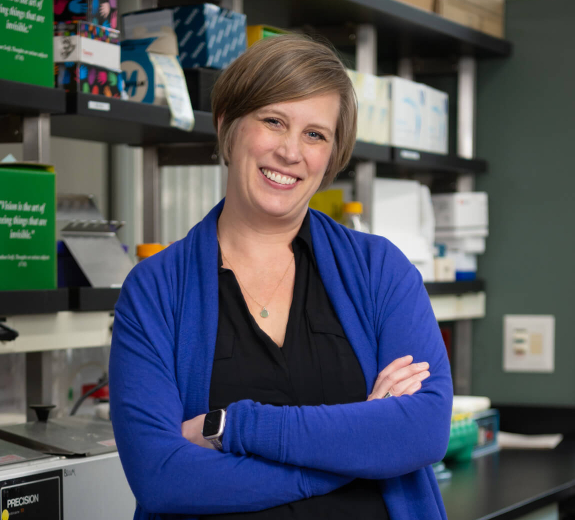Recognizing an unmet need in the clinic, JDRF hosted a workshop in 2012 to focus on the use and identification of T1D biomarkers, measurable characteristics used to track disease process and treatment progress. As a result, the Biomarker Working Group (BWG) was created to foster collaboration and data sharing among researchers in the diabetes community. Now comprised of 28 investigators across 17 institutes around the world, the BWG is an international initiative creating world-wide impact.
A critical component of the BWG is the CAV lab, which involves nine investigators from Seattle to Belgium, and is housed at BRI. Cate and fellow BRI researcher Alice Long, PhD, manage the CAV core and collaborate closely with the other investigators.
“Our goal is to identify biomarkers that can predict C-peptide decline.” she said, “We’re looking for something that would be easy to measure in the blood that can predict whether someone will have a rapid loss of insulin production after diagnosis, or whether they will keep making some insulin after diagnosis.”
The important distinction, according to Cate, is that people who continue to produce some insulin may have better glucose control than those who don’t. These studies might explain why those people are different. Identifying new biomarkers could improve enrollment criteria for new-onset trials to make clinical trials more targeted to the appropriate population and improve the likelihood of identifying drugs that work to halt the progression of T1D.
Cate didn’t initially plan on studying type 1 diabetes. Hailing from a small town in southeastern Montana, she was originally trained in infectious disease work, but its overlapping qualities with immunology pointed her in a different direction.
“This project has given me the chance to get to know other scientists and learn their perspectives, which is really helpful as a relatively new investigator myself,” noted Cate.
Cate, like many researchers, continues seeking answers to the questions T1D poses. With the resources she and others have access to through the JDRF Core and Assay Validation project, as well as the vital samples contributed by trial participants, she is working to get one step closer to answers every day.
This post originally appeared in the JDRF June 2017 E-newsletter




